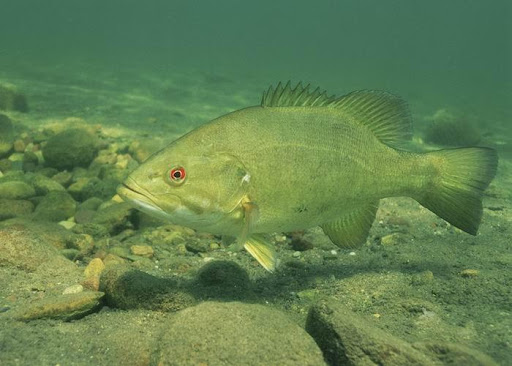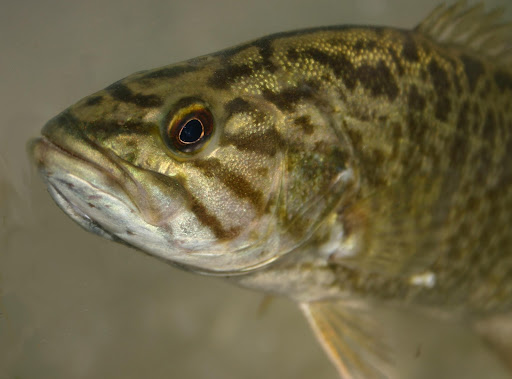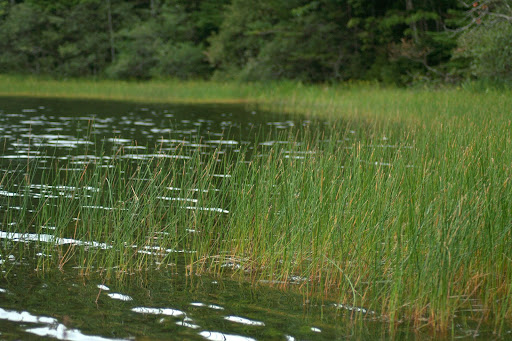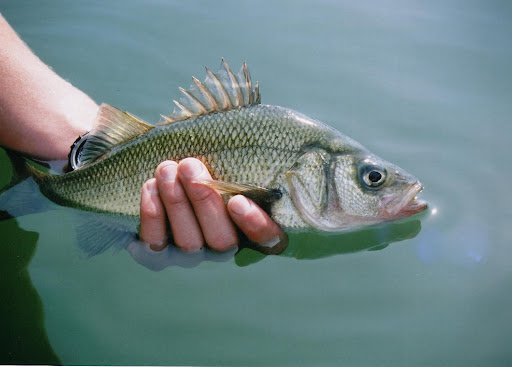Smallmouth Bass have a robust, brown-green body with a white belly. They have dark vertical bars on their sides, and dark horizontal bars on their head. Average length is 9–15 in (23–38 cm). Dorsal fin is spiny.
This species inhabits lakes and rivers with rocky bottoms and plenty of vegetation. It is an efficient predator of many smaller fish, mammals, and amphibians – not only eating native species, but also consuming much of the food that some native fish require to survive. The spread of both Smallmouth Bass and Chain Pickerel threaten native fish communities in more than half of the primary watersheds in Nova Scotia.
The first Smallmouth Bass were released into Bunkers Lake, Yarmouth County, in 1942. In total, only 13 introductions have been authorized – the last occurring in 1984.

The native White Perch is similar in appearance, and is known for its thrilling fight and delicious flavour.
Spiny dorsal fin, vertical bars on side, horizontal bars on head.



Smallmouth Bass grow very slowly in Nova Scotia due to low-productivity waters; a fish of 50 cm may be upwards of ten years old.
If you are in a lake or river that is known to have Smallmouth Bass, keep your fishing gear, boating gear, livewell, and buckets clean so that you are not accidentally transporting fish or fish eggs into another watershed. It is illegal to use or possess Smallmouth Bass as bait in Nova Scotia. If you spot this invasive species, report the location to iNaturalist or directly to the NSISC.
Join our mailing list.